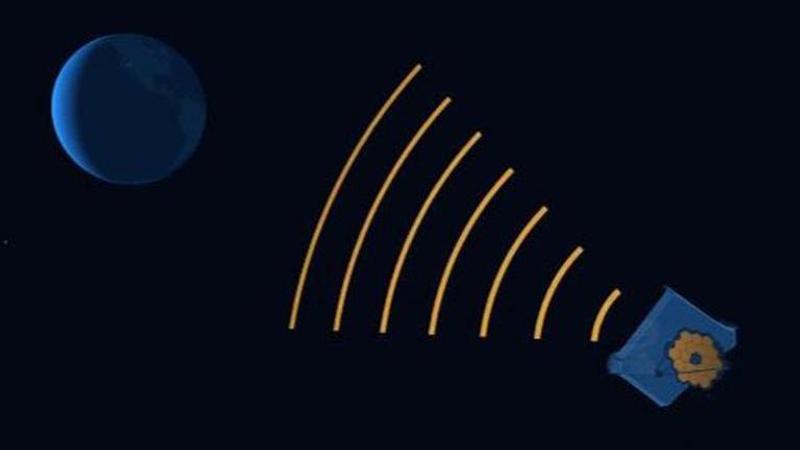Published 15:05 IST, July 16th 2022
How does NASA's James Webb Space Telescope send images and data to Earth? Read to know
James Webb Space Telescope beams back data through NASA's international array of massive radio antennas that are located on three continents.

Advertisement
The James Webb Space Telescope has finally begun its scientific observations and astronomers have high hopes of unfolding the universe with the world’s most powerful observatory. In its 20 years of expected lifespan, Webb will transmit loads of pictures and spectroscopic data about distant stars, early galaxies, exoplanets, and asteroids. But ever wondered how the Webb telescope sends its data from such a vast distance?
For the uninitiated, Webb has been installed at a location called the second Lagrange point, which is approximately 15 lakh kilometres from Earth. According to NASA, it takes about five seconds for data to reach from the telescope to the Earth which is then directed to the mission centers. Let us take a look at how these mission centers received the pictures.
The Deep Space Network
Scientists rely on the Deep Space Network to gather data sent from different interplanetary mission spacecraft. Dubbed the largest and most sensitive scientific telecommunications system in the world, the Deep Space Network or DSN is an international array of three giant radio antennas on three continents. The first DSN facility is located at Barstow in California, the second is in Madrid in Spain and the third is in Australia's Canberra.
These locations have been chosen because they allow the facilities to maintain constant communication with spacecraft as our planet rotates; when a spacecraft sinks below one DSN facility's horizon, another can pick up the signals and stay in touch. The three antennas pick up the spacecraft signals which are then sent to the mission centers.
NASA says that each of these facilities is placed equidistant from each other i.e. about 120 degrees apart in longitude. While it is used to support interplanetary missions and is unparalleled for making long-distance calls, scientists also use the DSN for radar and radio astronomy observations to better understand the solar system and the universe beyond it.
However, the DSN is also used to establish contact with a few spacecraft orbiting Earth along with those heading toward the Moon. The CAPSTONE (Cis-lunar autonomous positioning system technology operations and navigations experiment) CubeSat is currently on its way to the Moon and NASA scientists are communicating with it through the DSN.
15:05 IST, July 16th 2022



